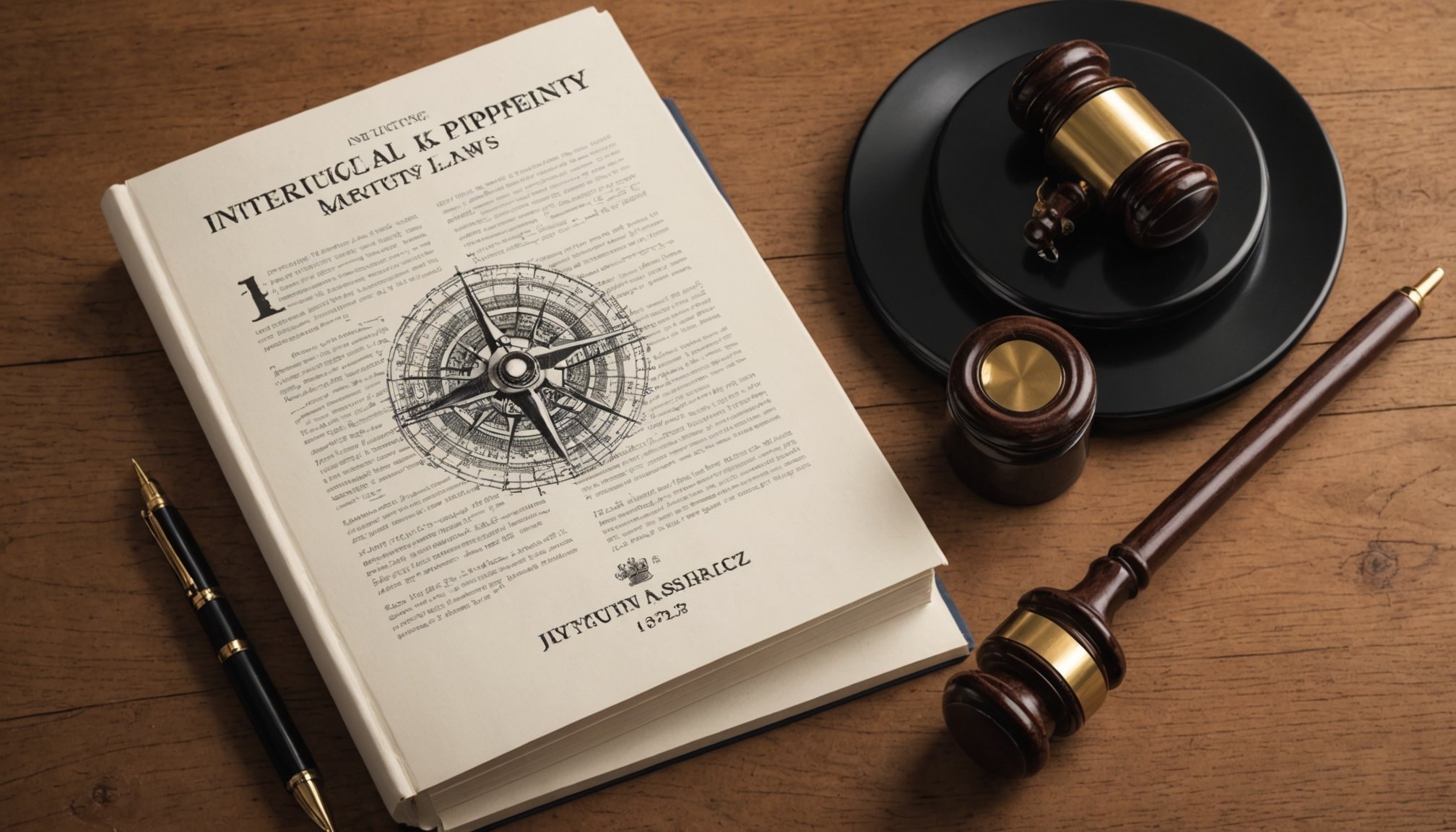Overview of UK Intellectual Property Laws
UK intellectual property laws play a crucial role in protecting the rights of publishers and creative professionals. These laws ensure that creators can benefit from their work by granting them exclusive rights and protecting their inventions and artistic creations. There are four main types of intellectual property rights in the UK: copyright, trademarks, patents, and designs. Each right serves specific purposes, providing different forms of protection for various types of intellectual property.
Copyright law, for instance, safeguards the expression of ideas, covering works like literature, music, and software, offering exclusive rights to creators for their use and distribution. Trademarks, on the other hand, protect signs, symbols, or logos that distinguish goods and services, ensuring brand recognition and consumer protection.
Have you seen this : Unlocking Success in Sustainable Hotel Projects: Your Comprehensive Guide to Navigating the UK’s Environmental Assessment Process
The significance of intellectual property extends beyond mere protection. It fosters innovation and creativity by offering economic incentives. Moreover, by safeguarding creative works, these laws encourage the ongoing development and dissemination of new ideas and products. Publishers, therefore, rely heavily on strong intellectual property legislation to ensure the integrity and profitability of their content in the competitive marketplace. Understanding these laws is pivotal for anyone involved in the publishing industry.
Understanding Copyright Law
Copyright law offers significant protection for publishers by securing exclusive rights for creative content management. In the UK, copyright explicitly covers original literary, musical, and artistic works, as well as sound recordings, films, and broadcasts. This protection ensures authors can control how their works are used, offering the potential for both revenue generation and safeguarding against unauthorized use.
This might interest you : Navigating UK Financial Services Regulations: An Essential Handbook for Aspiring Fintech Innovators
Publishing scenarios vary, but all primarily benefit from copyright law’s extensive reach. Consider a novelist: their manuscript is safeguarded, enabling them to negotiate publishing deals confidently. Similarly, for publishers investing in music or software, copyright provides a dependable framework to ensure appropriate rights to the content distributed. Importantly, these rights do not last indefinitely.
Copyright generally depends on the type of work but typically endures the creator’s life plus 70 years. However, exceptions like fair use provide allowances for critique, parody, or educational purposes without violating copyright. Additionally, some works enter the public domain once copyright expires, allowing unrestricted public access. For publishers, understanding such exceptions is crucial to navigate legal terrains effectively and maximise the potential of their creative portfolios, maintaining both legal compliance and competitiveness.
Trademarks and Their Importance
Trademarks hold significant value in the publishing world, acting as a powerful tool for brand protection. A trademark fundamentally serves to identify and distinguish a publisher’s goods or services from those of others. By registering a trademark, publishers secure exclusive rights over names, logos, and slogans associated with their works. This exclusivity aids in maintaining brand integrity and consumer trust.
The trademark registration process involves several steps, beginning with a thorough search to ensure the chosen mark does not conflict with existing ones. Application submission follows, requiring detailed descriptions and examples of the trademark’s use. Successfully navigating this process grants legal protection, preventing unauthorized use by others.
Trademark infringement occurs when another entity uses a protected trademark without permission, leading to potential legal disputes and reputational damage. Consequences can range from cease-and-desist orders to monetary compensation. Familiarity with these risks underscores the importance of safeguarding one’s brand.
Ultimately, trademarks are an integral component of intellectual property strategy for publishers, promoting recognition and legal security. They enable publishers to confidently invest in their brand development, ensuring their creations receive the esteem and protection they deserve in a competitive marketplace.
Key UK Laws Governing Intellectual Property
The UK has established a robust framework to safeguard intellectual property, vital for those in the publishing industry. At the heart of this framework is the Copyright, Designs and Patents Act 1988, which provides comprehensive guidelines on copyright, providing detailed protection for literary, musical, and artistic works. This legislation is pivotal in ensuring creators can maintain control over their creations, thereby protecting their potential revenue.
Equally important is the Trade Marks Act 1994, which governs the processes surrounding trademark registration. This act prevents unauthorised use of distinctive symbols, ensuring brand integrity and consumer trust in the marketplace. Understanding these primary laws helps publishers navigate potential legal challenges effectively.
Recent updates in intellectual property regulations, such as the changes due to Brexit, have slightly altered enforcement but still maintain a high standard of protection. For publishers, these updates mean a need for continuous awareness and adaptation to remain compliant and competitive.
Overall, these laws not only ensure a fair market but enable publishers to confidently explore and exploit their creative works, knowing their rights are legally supported. Staying updated on legislative changes, therefore, becomes not just a requirement but a strategic advantage.
Resources and Templates for Compliance
Navigating the complex landscape of intellectual property compliance is crucial for publishers. Accessible resources can play a vital role in ensuring legal adherence and protecting creative works. Several organizations offer invaluable guidance and templates to ease this process.
The UK Intellectual Property Office (IPO) is a primary resource, providing comprehensive information about intellectual property laws. Their website features guides, FAQs, and updates on legislation, making it an indispensable tool. The World Intellectual Property Organization (WIPO) also offers international insights, especially beneficial for publishers with a global reach.
Practical templates, such as licensing agreements and contracts, are essential for safeguarding rights. These templates outline terms between rights holders and users, ensuring clarity and legal protection. While online templates are available, customising them to suit specific needs is important. Legal professionals or intellectual property specialists can provide tailored advice to fit unique business models.
Staying informed about legislative changes is critical. Subscribing to newsletters from the IPO or legal updates from established law firms can keep publishers up-to-date. This proactive approach not only ensures compliance but also leverages newer protections, thereby maximising the longevity and impact of their creative assets. However, consulting professionals remains the best practice for intricate legal matters.
FAQs Addressing Common Legal Concerns
Navigating intellectual property can be daunting for publishers. Addressing frequently asked questions (FAQs) can demystify common legal concerns.
What is copyright and how does it protect my content?
Copyright grants exclusive rights to creators over their original works, whether literary, musical, or artistic. It authorises control over how these works are used, distributed, or adapted, crucially safeguarding your creative efforts against unauthorised exploitation.
How can trademarks benefit my publishing brand?
Trademarks are pivotal in distinguishing your works in the competitive market. By protecting names, logos, or slogans, trademarks fortify brand identity, ensuring consumers can uniquely associate your goods with your brand, bolstering trust and recognition.
Are there limits to these protections?
Yes, both copyright and trademark protections have nuanced boundaries. Exceptions such as fair use allow limited use for critique or educational purposes. Copyright typically lasts for the creator’s life plus 70 years, while trademark protection hinges on renewal and active use.
How can publishers avoid common pitfalls?
Avoid missteps by staying informed about intellectual property laws. Engage legal professionals for advice and utilise resources available through the UK Intellectual Property Office or dedicated legal services to navigate intricate compliance requirements.
Practical Advice for Aspiring Publishers
Navigating the intricacies of intellectual property protection is essential for anyone in the publishing industry. Securing your rights is a multi-faceted process that requires careful consideration and strategy.
Step One: Conduct thorough research to understand different types of intellectual property rights applicable to your work, such as copyright and trademarks. Once you know which rights protect your content, you can better strategise protecting your assets.
Step Two: Ensure all your works are properly documented, with clear date-stamped records for every piece. This prevents any future dispute over the originality or ownership of your creations.
Common pitfalls often include incomplete documentation and misunderstanding of rights duration and scope. Enlist the counsel of legal experts or professional advisors who specialise in intellectual property law, providing invaluable guidance tailored to your specific needs.
Engaging with experienced legal professionals is essential to bypass potential legal entanglements. They provide insightful advice on copyright and trademark registration processes, term negotiations, and compliance requirements.
Remember, leveraging professional resources isn’t just about preventing pitfalls; it’s a strategic move to enhance your competitive edge. A well-protected portfolio maximises your market presence and legal safeguards, sustaining long-term success.











